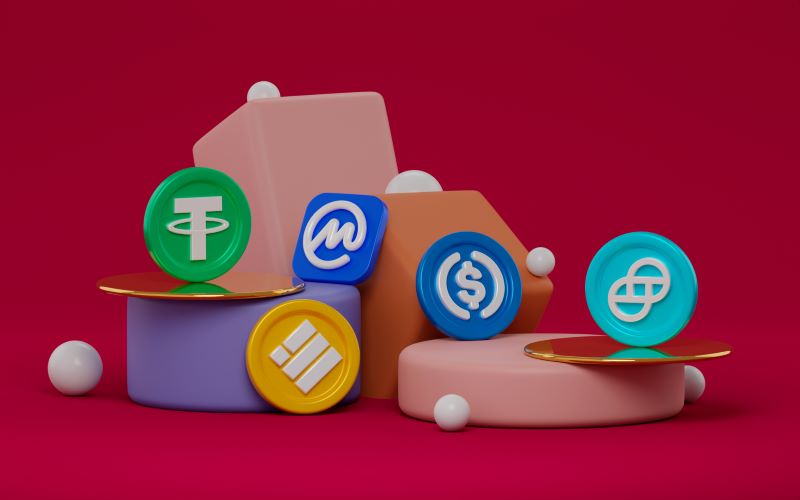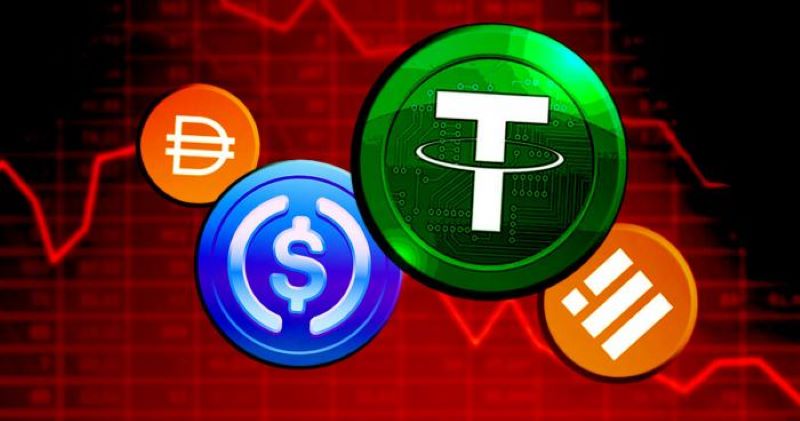In the dynamic world of crypto, making the smart choice between Custodial vs Non-Custodial Wallets is crucial for your security and control. As you dive into the digital currency space, you’re faced with a pivotal decision: choosing a home for your assets. Will you entrust them to a service that handles security for you, or take the reins with your own set of keys?
I’ve got the straight talk on how these choices shape your crypto experience, and I’m here to guide you through the maze of private key management, wallet insurance, and beyond. Ready to secure your crypto smarter? Let’s break down the essentials and get you on the path to informed and empowered wallet wisdom.
Understanding the Fundamentals: Custodial vs Non-Custodial Wallets
Defining Custodial and Non-Custodial Wallets
Let’s talk shop about keeping your crypto safe. Think of a custodial wallet like a safety deposit box at a bank. A company holds your keys and takes care of security. You trust them to handle your funds. Now, non-custodial wallets are like a safe at home. You hold the keys and you call the shots.
The Role of Private Key Management in Both Wallet Types
Keys open locks, right? In the crypto world, they’re called private keys. For custodial wallets, third-party wallet providers guard your keys. In non-custodial, you manage these keys yourself. It’s a big job. Good private key management means knowing terms like seed phrases, which help you recover your wallet if things go south. Hardware and software wallets can offer cold or hot storage solutions. Cold is offline and safer. Hot is online and handier.
Whether it’s a chunky hardware wallet you can hold, or a software wallet on your phone, you’ve got choices. Multi-signature wallets can up your game, requiring several keys for a transaction. Think of it like needing several keys to unlock a treasure chest – it’s harder for pirates to steal your gold.

When you choose a wallet, you’re looking at trade-offs. Do you prefer someone else worrying about wallet security, or do you want full control over your coins? Get this: Not all wallets are made equal. Wallet providers have their own rules. Some are all about user experience. Others focus hard on security and privacy. Understanding wallet types means knowing how each one affects your control over funds.
Crypto wallet comparison is like picking a car. Do you want the speed and ease of online wallet services, or the armored tank of encrypted wallet security? In the end, it’s how you want to ride through the blockchain world.
Pick a custodial wallet if you want convenience and don’t mind others holding the reins. They might even provide wallet insurance policies. But remember, you’ll have to trust them to follow wallet regulatory compliance. If going solo rocks your boat, non-custodial wallets offer freedom. That means no middleman, full financial sovereignty, and a trustless system. Here, wallet backup solutions take center stage.
In the grand battle of custodial versus non-custodial, know this: it’s about safety and smarts. Understanding crypto custody can light the way. And hey, don’t stress on making the perfect choice. Understanding your crypto transaction control can help you switch lanes if your needs change. It all boils down to how you want to mesh with the ever-evolving world of decentralized finance (DeFi) integration.
Remember, the best wallet is the one that fits your life like a glove—easy to wear, tough to tear. From wallet theft prevention to guarding against wallet hacking risks, the key is in your hands. Control, convenience, security – what’s your priority?
In-Depth Comparison: Custodial and Non-Custodial Wallets
Security Implications for Cryptocurrency Storage
When choosing how to store your crypto, safety comes first. Think of it like picking a home for your money. You want it to be safe, right? Well, that’s what we look at in custodial and non-custodial wallets. They hold your digital coins, but in different ways.
Custodial wallet security means a third party holds your keys. Imagine a bank holding your money. You trust them to keep it secure. They manage all the tech stuff. If you forget your password, they can help you get back in. But, there’s a catch. Since they hold your keys, they have control. They can block your access if they must. Plus, if they get hacked, your crypto could be at risk.
Non-custodial wallet benefits include total control. Your keys, your coins. You don’t rely on anyone else. It’s all on you to keep your keys safe. If you mess up, there’s no one to call for help. It’s a big responsibility but gives you full power over your funds.
Convenience vs Control: How Wallet Types Affect Your Crypto
Choosing a wallet type is like picking a car. Some are easy to drive but don’t give you full control. Others let you take the wheel, but you need to know a bit more about how they work.
Custodial wallets, like those from exchanges, are super user-friendly. They make trading crypto easy peasy. But remember, the exchange controls your keys. That means you have to trust them a lot.
Non-custodial wallets put you in the driver’s seat. Software wallets live on your computer or phone. You run the show, managing your keys and all that comes with it. If you go for a hardware wallet, it’s like having a safe at home. Cold storage solutions keep your crypto offline and far away from hackers.

Private key management is key here (pun intended!). It’s all about how you handle those important keys. With a non-custodial wallet, it’s up to you to keep them safe. Write down your seed phrases and store them safely. Consider using multi-signature wallets if you want extra safety nets in place.
Hot storage solutions, like online wallets, let you access your money fast but are less secure. Cold storage, like hardware wallets, keeps your money safe but it’s a bit slower to use.
Understanding wallet types isn’t just tech talk. It affects your control, safety, and peace of mind. It’s about finding that sweet spot between convenience and keeping your crypto safe from theft and hacks. Always remember, in the crypto world, personal security is a must-have.
Whether you choose safe and simple or full control with more work, know your options. If you pick custodial, check their wallet insurance policies and how they handle wallet hacking risks. Going non-custodial? Get ready to learn about key storage best practices and wallet backup solutions. In the end, it’s all about what works best for you and your crypto journey.
Advanced Security Measures for Digital Asset Protection
Implementing Multi-Signature and Other Secure Backup Solutions
When we talk about crypto, security is key. I’ve seen the good, the bad, and the ugly. And trust me, you want to avoid the bad and the ugly. It’s all about keeping those digital coins away from hackers and thieves. So, let’s dive into one security superhero: the multi-signature wallet.
What is a multi-signature wallet? It’s like a bank safe that needs two keys to open. Instead of one person holding all the power, you need two or more to agree. This means if someone gets your key, they can’t do much without the other keys. It spreads the risk and keeps your coins safer.
Multi-signature setups also help if you lose your key. Usually, losing a key means saying bye-bye to your crypto. But with multi-signature wallets, you’ve got backup. As long as you still have the other keys, you’re golden.
For the best security, you should know where to store your keys. Use combinations like hardware wallets, which are super secure USBs, or paper wallets that are literally your keys printed out. Keep them in safe places like a bank vault or a home safe.
Now, seed phrases. Imagine losing your wallet. Your stomach drops, right? Seed phrases can ease that pain. They are a list of words that get your wallet back. Write your seed phrase down and hide it well. Never put it on a computer. Why? Because hackers can’t hack paper.
When picking where to store your crypto, think about control. Who’s holding the keys? With a custodial wallet, a third party has them. With a non-custodial wallet, you’re in charge. Both have perks, but it depends on what you’re comfy with. Want more control? Go non-custodial. Prefer someone else to manage security? Custodial is your buddy.
Balancing User Experience with Asset Security and Privacy
Crypto is all about balance. You want to keep your digital dough safe without feeling like you’re solving a complex puzzle every time you use it.
User experience in wallets is huge. A wallet should be easy to use. It should make you feel like a crypto pro, not scratch your head in confusion. Simple designs, clear instructions – that’s the sweet spot. But ease should not mean less safe.
Privacy is another big thing. Your business is yours alone. Good wallets don’t spill your secrets. They keep your transactions and balance away from nosy folks.
Here’s the deal. Security, easy use, and privacy must work together. When they do, you have a wallet that not only protects your crypto but makes it a breeze to use. Plus, you keep your privacy. It’s like having your cake and eating it too.
So, when you’re choosing a wallet, think about what matters most. Do you want top-notch security like multi-signature options? I’d say yes. But don’t forget about how easy it is to use or how private it keeps your stuff. A little research now can save you a headache or heartache later.
Remember, in crypto, being smart about your wallet is not an option; it’s a must. It’s the difference between a good night’s sleep and a nightmare. Keep your coins safe, and you’ll enjoy the crypto ride a whole lot more.
Navigating Risks and Embracing Financial Sovereignty
Regulatory Considerations and Trustless System Benefits
When it comes to keeping your crypto safe, you’ve got two main paths. You can go with a custodial wallet or a non-custodial one. Picking between them is key. It’s like choosing between storing your cash in a bank or a safe at home.
Custodial wallet security means a third party holds your digital keys. Think of it as a bank for your crypto. They take care of the tech stuff, but also control your funds. This comes with certain risks and benefits. One key point is regulatory compliance. Wallet providers must follow rules that aim to protect your money. If they’re on top of regulations, you breathe a little easier.
In contrast, non-custodial wallet benefits include having full power over your funds. You’re the boss, no one else. Non-custodial wallets are trustless. That means you don’t need to trust a third party. It’s just you and the blockchain, pure and simple. But being your own bank is a big job.
Private key management is all you with non-custodial wallets. You must keep your keys safe. Lose them and your crypto’s gone for good. It’s vital to know about options like hardware wallets. They’re like super-secure USB sticks for your crypto.
The Importance of Wallet Insurance and Recovery Methods
Let’s chat about how to get your crypto back if things go sideways. Wallet insurance is your safety net. Some wallets offer it, some don’t. Insurance can cover losses from hacks or thefts. It’s peace of mind in a wild crypto world.

Now what if you forget your password or lose access? That’s where wallet recovery methods come in. Seed phrases are a lifeline here. They’re a list of words that let you recover a wallet. Like a secret code to get your crypto back. Write them down, keep them safe, and don’t ever share them.
So why should you sweat this stuff? It’s about your cash and your control. Understanding wallet types, from hot to cold, helps you pick what’s best for you. Do you want the ease of an online wallet service, or the cold storage chill of a hardware wallet?
There’s no one-size-fits-all in crypto storage. Your choice should be what makes sense for your life. Think hard about your needs for convenience and control. Your crypto journey is yours. Equip yourself with the right knowledge, and you’ll navigate this path like a pro. Remember, in the world of crypto, understanding is your superpower.
In this post, we dove into the key differences between custodial and non-custodial wallets, highlighting how they manage private keys. We looked at the trade-offs between security and ease of use, noting that your choice impacts how you interact with your crypto.
We then compared the two, exploring security risks and the balance of convenience versus control. We learned that while custodial wallets may offer simplicity, non-custodial ones give you more power over your digital assets.
We also discussed how to beef up security for your digital assets. Options like multi-signature and secure backup techniques are essential to consider. They help keep a good balance between a smooth user experience and the safety of your assets.
Lastly, we talked about staying safe while you embrace the power of managing your digital wealth. Understanding rules and using wallets with insurance can be your safety net.
My final thought? Whether you value convenience or full control, understanding these wallets is vital. Choose the one that fits your needs best, and always stay informed on ways to secure your crypto wealth. Keep learning; your financial independence is worth it!
Q&A :
What is the difference between custodial and non-custodial wallets?
Custodial wallets are digital wallets where the private keys are managed by a third party, typically a cryptocurrency exchange or service provider. This implies that the service holds and protects your assets, which can make transactions easier as they often handle the technical aspects of the blockchain. Non-custodial wallets, in contrast, provide complete control to the user, who is solely responsible for managing their private keys. This can offer a higher level of security and autonomy but requires the user to take greater responsibility for their assets’ safety.
How secure are non-custodial wallets compared to custodial wallets?
Non-custodial wallets are considered more secure in terms of user control because the owner has exclusive access to their private keys, which are never shared with a third party. This minimizes the risks associated with third-party breaches or misconduct. However, because users are entirely responsible for their security, the risk of losing access due to forgotten passwords or keys is higher. Custodial wallets, while more susceptible to hacking attempts targeting the custodian, often provide additional layers of security features and backup options, which can protect against user error.
Can I recover my assets from a custodial wallet if the service goes down?
If a custodial service goes down, the ability to recover assets will depend on the specific circumstances and policies of the service provider. Many reputable services have contingency plans to protect users’ assets in such events. However, it’s essential to research and understand a custodial provider’s recovery process and terms of service before entrusting them with your assets.
What are the benefits of using a custodial wallet?
Custodial wallets offer a range of benefits, including ease of use, as they often come with user-friendly interfaces that simplify the process of managing and trading cryptocurrencies. They also provide a level of convenience, as the service takes care of technical details such as backup and security protocols. Additionally, custodial wallets may offer insurance and other protection measures in case of theft or hacking, making them an appealing option for users who prioritize ease and peace of mind over absolute control.
Which wallet type is better for beginners, custodial or non-custodial?
For beginners, custodial wallets might be a better choice due to their simplicity and convenience. These wallets are typically associated with cryptocurrency exchanges that offer straightforward interfaces and customer support to guide new users. However, as one becomes more familiar with how cryptocurrency transactions work, and the importance of security becomes clearer, they may choose to transition to a non-custodial wallet for more control and security. It’s crucial for beginners to be aware of the trade-offs and educate themselves on best practices whichever wallet type they choose.
